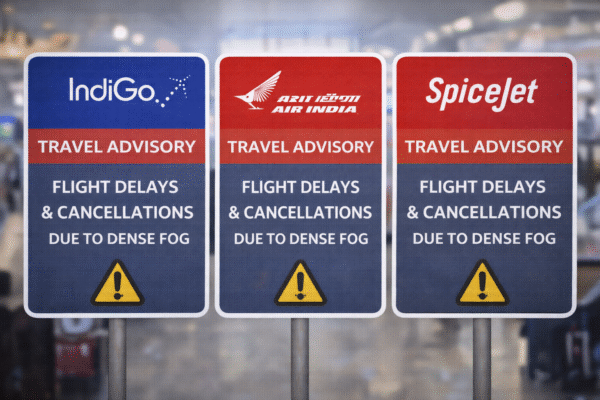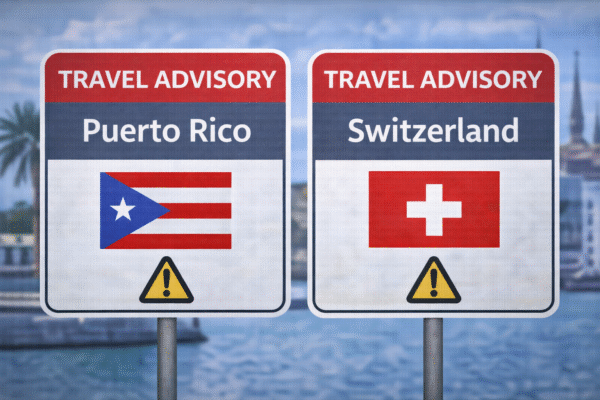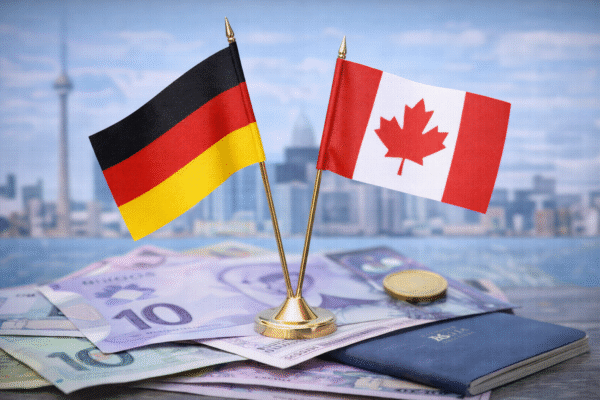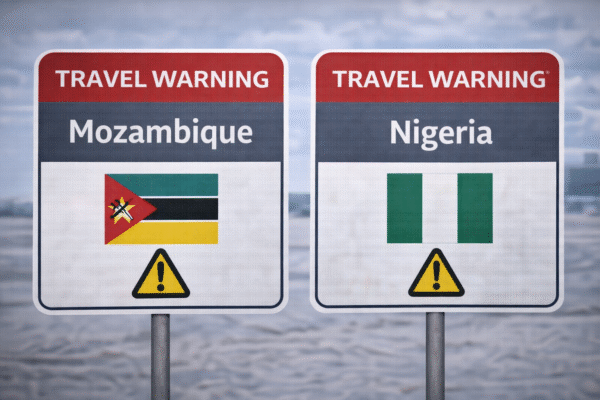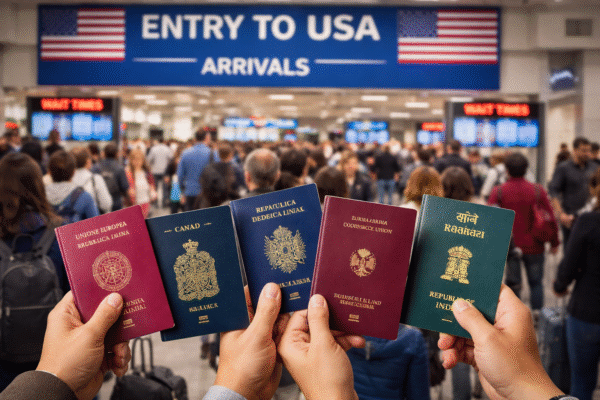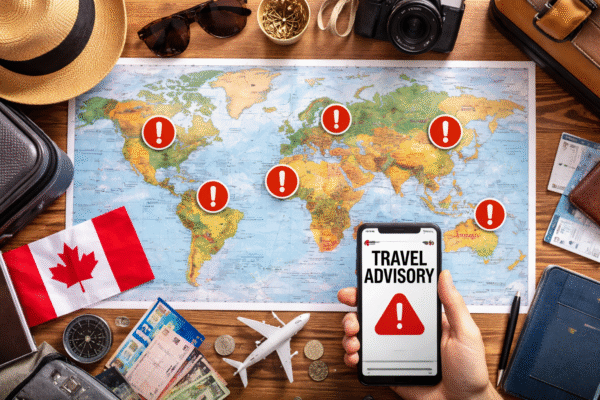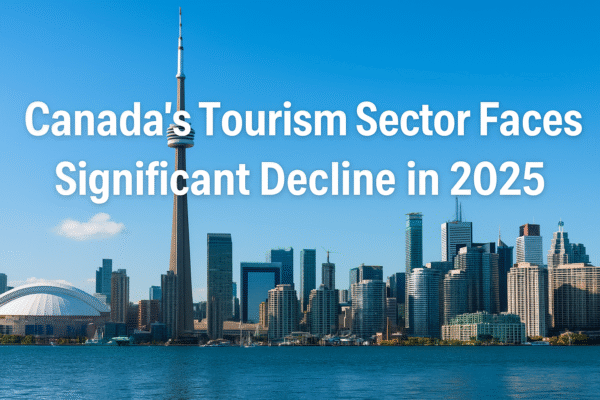OTTAWA — Canada’s once-thriving tourism sector is facing one of its most challenging years in over a decade. In the first half of 2025, international arrivals dropped sharply, tourism revenue plunged, and the vital U.S. travel market continued to erode amid growing geopolitical tensions and economic uncertainty.
According to Statistics Canada, foreign arrivals decreased by 16.1% year-over-year, with just 5.9 million international visitors recorded in May 2025 compared to 7.1 million in May 2024. These declines are especially steep among travelers from the United States — Canada’s largest source market — as political frictions and inflation discourage cross-border leisure and business travel.
U.S. Market Decline Hits Canadian Tourism Hard
The downturn in U.S. visitor numbers has had a cascading effect on tourism-dependent sectors in cities like Toronto, Vancouver, Montreal, and Banff. U.S. air arrivals by Canadian residents plunged 24.2%, while automobile crossings dropped 33.1% in June, highlighting growing reluctance from Americans to visit their northern neighbor.
This slump coincides with unresolved trade disagreements, visa policy tightening, and persistent cultural and political frictions that have left many Americans choosing other destinations over Canada. The U.S. market had traditionally accounted for over 65% of foreign tourist arrivals, amplifying the impact of its decline.
Foreign Spending on Tourism in Canada Shrinks
Tourism-related spending by international visitors in Canada dropped 2.6% in Q1 2025, reversing the modest 2.3% growth observed in the previous quarter. Sectors like accommodation, food services, and air travel saw the steepest declines, according to the Canadian Tourism Commission.
From downtown hotels in Vancouver to boutique restaurants in Old Montreal, businesses are grappling with shrinking tourist wallets. Many report reduced average daily spend per visitor, shorter stays, and a greater dependence on discount-driven domestic travelers.
Cost Pressures and Competition from Emerging Destinations
Global inflation and currency shifts have made Canada relatively more expensive for travelers, especially those from Europe and Asia. The strong Canadian dollar, paired with rising costs in urban centers, is pushing budget-conscious tourists toward cheaper alternatives in Eastern Europe, Southeast Asia, and South America.
At the same time, Canadians themselves are trimming vacation budgets or opting for regional travel. The Bank of Canada’s latest Consumer Confidence Index noted a 9% drop in planned discretionary spending on travel.
Shorter Trips, Changing Itineraries
The shift in travel behavior is also evident in the growing preference for shorter, regional trips over traditional extended stays. Popular destinations like Niagara Falls, Banff, and Whistler have seen a dip in overnight bookings, while rural and lesser-known regions remain underutilized despite marketing efforts.
Government data shows a decline in multiday stays in 2025, as tourists opt for quick city visits or road trips without overnight lodging. Experts attribute this trend to both affordability concerns and post-pandemic preference for “bite-sized” travel experiences.
Economic and Policy Drivers of the Tourism Crisis
1. Diplomatic Tensions
The Canada–U.S. political climate has remained volatile. From border policy confusion to fluctuating trade rules, American travelers express growing reluctance to vacation in Canada. Canadian border crossings, long seen as hassle-free, are now seen as less predictable, especially for senior and family travelers.
2. Inflation and Consumer Caution
With hotel prices up nearly 12% in top Canadian destinations and airfare increasing, international visitors are budgeting less per trip. The same inflation that pressures locals also discourages inbound travel.
3. Overtourism in Major Cities
Popular urban hubs like Toronto and Vancouver are increasingly viewed as expensive and overcrowded. Despite world-class amenities, a lack of infrastructure expansion, especially in transportation and lodging, has made peak-season travel stressful.
Canada’s Tourism Recovery Roadmap
Despite the grim outlook, Canada is not standing still. Destination Canada and provincial tourism boards are implementing targeted strategies to stabilize and eventually reverse the decline.
1. Boosting Domestic Travel
The federal government has introduced “Explore Canada” grants and tax credits, encouraging Canadians to travel within their own provinces. Reduced rail fares, regional airline discounts, and cross-province campaign collaborations (such as “Atlantic Canada Coastal Road Trips”) are driving internal tourism.
2. Targeting Emerging Global Markets
With China’s outbound travel rebounding and India’s middle-class growth, Canada is increasing visa facilitation and multilingual campaigns to attract tourists from Asia and Latin America. Special tour packages for Indian families and educational travelers have gained traction.
3. Tech-Driven Promotion
The Canadian Tourism Commission is also leaning into AI-based marketing and immersive tech. Augmented reality previews, influencer-led digital campaigns, and interactive booking platforms are helping reposition Canada as a must-visit destination for Gen Z and millennial travelers.
4. Diversifying Regional Offerings
Canada is investing in lesser-known destinations like the Yukon, Saskatchewan, and Cape Breton Island, offering unique experiences from aurora viewing to Acadian heritage trails. This “decentralized tourism” strategy aims to relieve pressure on major urban centers while distributing economic benefits more widely.
Looking Ahead: A Resilient Future?
While Canada’s tourism slump in 2025 poses clear challenges, it also provides an opportunity to reimagine how the country welcomes the world. With bold digital outreach, policy reforms, and a renewed focus on inclusive, sustainable tourism, Canada has the tools to rebuild its global appeal.
As global travel rebounds and emerging markets mature, Canada can reclaim its position as a leading tourism destination—provided it adapts swiftly to evolving traveler preferences and global dynamics.
📌 Related Destinations & Keywords to Explore:
Toronto travel trends 2025, Vancouver tourism slump, Canada visitor visa updates, Banff travel statistics, Niagara Falls tourism data, Montreal hotel industry news, Destination Canada marketing strategy, Indian tourists in Canada, Canada tourism recovery plan, travel to Canada in 2025
For more travel news like this, keep reading Global Travel Wire




